UNIT 6 : PREPARATION OF FINANCIAL STATEMENTS FOR A LIMITED LIABILITY COMPANY
Key unit competence: To be able to prepare financial statements for alimited liability
Introductory activity
Read the following information and answer the question that follows
for the year ended 31st March 2010 from the financial records of Watt
Limited:
Distribution Costs FRW 5,470; Interest Costs FRW 647; Cost of Sales
FRW 18,230, Sales FRW 44,870; Income Tax Expense FRW 1,617;
Administrative Expenses FRW 9,740; an asset originally cost FRW 10
,000 and was revalued to FRW 15,000
a) Which financial statement to be prepared by Watt Limited?
b) Which parts of that statement of Watt Limited?c) What income statement and other comprehensive?
6.1. Statement of comprehensive income
Learning Activity 6.1
KEZA is accountant of ABC ltd she has been prepared well ledger and
trial balance the next step is to be sure if they obtain net profits or net loss
for the period.
Required:
1. Which financial statement KEZA is going to prepare?2. Give five examples of elements included in this financial statement.
6.1.1 Trading and Profit or loss account
Objective and scope
As well as covering accounting policies and other general considerations
governing financial statements, IAS 1 Presentation of Financial Statements gives
substantial guidance on the form and content of published financial statements.
IAS 1 gives guidance on the format and content of all of these, apart from thestatement of cash flows, which is covered by IAS 7.
The entity should identify each component of the financial statements very
clearly. IAS 1 also requires disclosure of the following information in a prominent
position. If necessary it should be repeated wherever it is felt to be of use to the
readers in their understanding of the information presented.
After extracting a trial balance, the next step is to determine the amount of profit
or loss that the business has made during the trading period. This is done bypreparing two accounts namely:
There are basically two formats that are used to prepare a trading account.
• Horizontal• Vertical format
Horizontal T-formatABC limited trading account for the year ending ……./……./……../
(Vertical format)
ABC Limited (name of company) trading account for the yearended………./…../…../
Trading account
• Trading account is an account which is prepared to determine the gross
profit or gross loss of the business concern. It shows the revenues from
sales, the cost of those sales or goods sold and the gross profit from
for the specific period ended. It is prepared after the preparation of the
trial balance. Trading account is where the value of the gross profit or
gross loss is determined by deducting the cost of goods sold from net
sales i.e Gross Profit = Net Sales – Cost of Sales, or Gross Loss=
Cost of Goods Sold - Net Sales.
• Profit and loss Account where the value of net profit or Net loss is
calculated by deducting total operating expenses from the gross profitsi.e Gross profit – total expenses.
Items found in a trading account.
i. Sales: Refer to the value of goods which were bought for resale and have
been sold by the business. It is revenue earned from goods sold. They are
entered in the trading account for the purpose of calculating gross profit or loss.
ii. Sales return: Value of goods that were previously sold but have been
returned to the business.
iii. Net sales = Sales – Return inwards/ Sales Return
iv. Opening stock: Unsold goods in the business available at the beginning
of the new trading period.
v. purchases: Goods bought by the business for resale
vi. Purchases return: Goods previously bought by the business for sale
but have been sent back to the suppliers. This value is treated in the
trading account and it is subtracted from the purchases to get the net
purchases i.e.
Net purchases = purchases – return outwards/purchase returns
vii. Carriage in wards: refers to the cost of transporting the goods or bring
the goods up to the premises. It forms part of the goods bought henceadded to purchases the trading account.
viii. Warehouse wages: These are payments made directly for purchases
activity. Only wages paid directly for purchases in trading account to
determine the gross profit or gross loss. Net purchases = Purchases +Carriage Inwards +Wages -Purchases Return.
ix. Closing stock: Goods not sold by the business at the end of a trading
period. It’s included in the trading account and it is subtracted from thegoods available for sale to get cost of sales.
Cost of Goods Sold (CoGS) = Cost of Goods Available for Sale
(CoGAS) – closing stock.
Operating expenses (to be found in Profit and Loss Account):
These are the expenses incurred by the business on services that help in the
normal operation and running of the business. Such expenses include; transport,
electricity, rent insurance/premium, carriage outwards, salaries, water bills,
postage, discount allowed, advertising, communication, depreciation and bad
debts. In the profit and loss account the total operating expenses are subtractedfrom the total income or gross income to get net profit or net loss
Operating expenses fall into three major categories, namely:
i. Administrative expenses: comprising of office salaries and wages,
office rent and rates, office lighting, electricity and power, office stationery,
telephones, insurances, etc.
ii. Selling and distribution expenses: comprising of motor running
expenses, advertising, showroom, salesman salaries, carriage on sales etc.
iii. General and financial expenses: comprising of interest charges on
loan, and overdraft, bank charges, discount allowed, sundry or generalexpenses, etc.
Managers’ salaries
The salary of a sole trader or a partner in a partnership is not a charge to the
statement of profit or loss but is an appropriation of profit. The salary of a manager
or member of management board of a limited liability company, however, is an
expense in the statement of profit or loss, even when the manager is a shareholderin the company. Management salaries are included in administrative expenses.
Taxation
Taxation affects both the statement of financial position and the statement of
profit or loss. All companies pay some kind of corporate taxation on the profits
they earn, which we will call income tax in line with the terminology in IAS 1, but
which you may find called ‘corporation tax’
Note that because a company has a separate legal personality, its tax is included
in its accounts. An unincorporated business would not show personal income
tax in its accounts, as it would not be a business expense but the personal affairof the proprietors.
i. The charge for income tax on profits for the year is shown as a deductionfrom profit for the year.
ii. In the statements of financial position, tax payable to the Government is
generally shown as a current liability, as it is usually due within 12 monthsof the year end.
iii. For various reasons, the tax on profits in the statement of profit or loss and
the tax payable in the statement of financial position are not normally thesame amount
Example
A company has a tax liability brought forward of FRW 15,000. The liability is
finally agreed at FRW 17,500 and this is paid during the year. The company
estimates that the tax liability based on the current year’s profits will be FRW20,000.
Prepare the tax liability account for the year.
Inter-relationship of statement of profit or loss and statement of
financial position
When we were dealing with the financial statements of sole traders, we
transferred the profit for the year to the capital account. In the case of limited
liability companies, the profit for the year is transferred to retained earnings in
the statement of changes in equity.
The closing balance of the accounts in the statement of changes in equity isthen transferred to the statement of financial position.
Gains on property revaluation
Gains on property revaluation arise when a property is revalued. The revaluation
is recognized in the other comprehensive income part of the statement of profit
or loss and other comprehensive income and shown in the statement of changesin equity as a movement in the revaluation surplus.
For example, an asset originally cost FRW 10 million and was revalued to FRW
15 million. The gain on the revaluation is recognized in the statement of profit
or loss and other comprehensive income (in the other comprehensive incomesection) and then shown as a movement in the revaluation surplus
Illustration
IDC Ltd has share capital of 400,000 ordinary shares of FRW 10 each and
200,000 5 per cent preference shares of FRW 10 each.
The net profits for the first three years of business ended 31 December are:
2014, FRW 10,967,000; 2015 FRW 4,864,000; and 2016 FRW 15,822,000.
Transfers to reserves are made as follows: 2014 nil; 2015, general reserve,
FRW 10,000; and 2016, fixed assets replacement reserve, FRW 22,500.
Dividends were proposed for each year on the preference shares at 5 per cent
and on the ordinary shares at: 2014, 10 per cent; 2015, 12.5 per cent; 2016,15 per cent.
Corporation tax, based on the net profits of each year, is 2014 FRW 410,000;
2015 FRW 525,000; 2016 FRW 630,000Required: Prepare profit or loss account IDC Ltd
6.1.2 Presentation of statement of profit or loss and other
comprehensive income
We have considered just the statement of profit or loss. However, IAS 1 requires
entities to include a statement of profit or loss and other comprehensive income,
either as a single statement or as two separate statements:
Statement of profit or loss and a statement of other comprehensive
income
The statement of profit or loss and other comprehensive income takes the
statement of profit or loss and adjusts it for certain gains and losses. At Financial
Accounting level, this just means gains on revaluations of property, plant and
equipment.
The idea is to present all gains and losses, both those recognized in profit or
loss (in the statement of profit or loss) as well as those recognized directly in
equity, such as the revaluation surplus (in other comprehensive income).
IAS 1 gives the following suggested format for a statement of profit or loss andother comprehensive income
ABC CO
Statement of profit or loss and other comprehensive income forthe year ended 31 December 2012
Or
Statement of profit or loss and other comprehensive income for theyear ended 31 December 20x8 Extract
Other comprehensive income:
Gain on property on revaluation
Total comprehensive income = Profit for the year + other
comprehensive income =
Format of a trading account
Note:
• A reference to other comprehensive income means the last three lines
in the statement above. However, a reference to statement of profit
or loss and other comprehensive income means the whole statement
shown above.
• At the Financial Accounting level, the only items of other comprehensive
income are gains on revaluations of property, plant and equipment.
• Income statement is a financial statement that reports a company’s
financial performance over a specific accounting period. Financial
performance is assessed by giving a summary of how the business
incurs its revenues and expenses through both operating and nonoperating activities.
Illustration
ABC ltd company trial balance on 31/12/2019


Notes:
a) Closing inventory FRW 8,000
b) Depreciation on plant and machinery at 15% buildings 10%
c) Provision for doubtful receivables FRW 500
d) Insurance prepaid FRW 50
e) Outstanding rent
f) An asset (land) originally cost FRW 15 million and was revalued toFRW 20 million.
Required:
i) To Prepare a statement of profit or loss and other comprehensive incomefor the year ended 31 December 2019
Answer:
Vertical formatABC ltd Company trading account on 31/12/2019
Answer:
Vertical format
i) Statement of profit or loss and other comprehensive income for the yearended 31 December 2019.

Application activity 6.1
ABC Ltd has share capital of 400,000 ordinary shares of FRW 10 each
and 200,000 5 per cent preference shares of FRW 10 each.
The net profits for the first three years of business ended 31 December
are: 2014, FRW 10,967,000
2015 FRW 14,864,000; and 2016 FRW 15,822,000.
Transfers to reserves are made as follows: 2014 nil; 2015, general reserve,
FRW 100,000; and 2016, fixed assets replacement reserve, FRW 225,000.
Dividends were proposed for each year on the preference shares at 5 per
cent and on the ordinary shares at: 2014, 10 per cent; 2015, 12.5 per
cent; 2016, 15 per cent.
Corporation tax, based on the net profits of each year, is 2014 FRW
410,000; 2015 FRW 525,000; 2016 FRW 630,000
Required: Prepare profit or loss account ABC Ltd at ended 31 Decemberare: 2015, 2016
6.2 Statements of Financial Position
Learning Activity 6.2
ABC Company is closing its Financial period and they need to know the
company’s Financial Position. As a hired accountant,
You are asked to:
1. Tell which statement that shows the Financial Statements of abusiness and its elements.
6.2.1 Presentation of statement of financial position
ABC CompanyStatement of financial position as

6.2.2 Element of statement of Financial position
The statement of financial position makes use of accounting equation concepts:
Assets = Capital+ liabilities
The statement of financial position is also prepared according to the businessentity convention/concept, that a business is separate from its owners.
Assets
The assets are exactly the same as those we would expect to find in the account
of a sole trader.
The only difference is that the detail is given in notes. Only the totals are shownon the face of the statement of financial position.
Equity
Capital reserves usually have to be set up by law, whereas revenue reserves
are appropriations of profit. With a sole trader, profit was added to capital.
However, in a limited company, share capital and profit have to be disclosed
separately share capital, reserve, retained earnings, dividends, because profit
is distributable as a dividend but share capital cannot be distributed. Therefore,any retained profits are kept in the retained earnings reserve.
Liabilities
Liabilities are split between current and non-current
Users of financial statements need to be able to identify current assets and
current liabilities in order to determine the company’s financial position. Where
current assets are greater than current liabilities, the net excess is often called
‘working capital’ or ‘net current assets.
Each entity should decide whether it wishes to present current/non-current
assets and current/ non-current liabilities as separate classifications in the
statement of financial position. This decision should be based on the nature of the
entity’s operations. Where an entity does not choose to make this classification,
it should present assets and liabilities broadly in order of their liquidity.
In either case, the entity should disclose any portion of an asset or liability which
is expected to be recovered or settled after more than 12 months. For example,
for an amount receivable which is due in installment over 18 months, the portiondue after more than 12 months must be disclosed.
Current assets
An asset should be classified as a current asset when it is:
– Expected to be realized in, or is held for sale or consumption in, the
entity’s normal operating cycle
– Held primarily for the purpose of being traded
– Expected to be realized within 12 months after the reporting date
– Cash or a cash equivalent which is not restricted in its use all other
assets should be classified as non-current assets.
All other assets should be classified as non-current assets
Non-current assets include tangible, intangibles operating and financial assets
of a long –term nature. Other term with the same meaning can be used (“fixed”
“long-term”).
The term operating cycle of an entity is the time between the acquisition of
asset for processing and their realization in cash or cash equivalent. Current
assets therefore include assets (such as inventories and trade receivables) that
are sold or realized as part of the normal operating cycle. This is the case evenwhere they are not expected to be realized within 12 months.
Current liabilities
A liability should be classified as a current liability when it is:
– Expected to be settled in the entity’s normal operating cycle
– Due to be settled within 12 months of the reporting date– Held primarily for the purpose of being traded
All other liabilities should be classified as non-current liabilities.
The categorization of current liabilities is very similar to that of current assets.
Thus, some current liabilities are part of the working capital used in the normal
operating cycle of the business (i.e trade payables and accruals for employee
and other operating costs). Such items will be classed as current liabilities even
where they are due to be settled more than 12 months after the reporting date.
There are also current liabilities which are not settled as part of the normal
operating cycle, but which are due to be settled within 12 months of the
reporting date. These include bank overdrafts, income taxes, other non-trade
payables and the current portion of interest-bearing liabilities. Any interest
bearing liabilities that are used to finance working capital on a long-term basis,
and that are not due for settlement within 12 months, should be classed asnon-current liabilities.
Example:
From the example 6.2.2.1 Present statement of financial position of ABC limitedCompany for the ended 31 December 2019 in vertical format.
Statement of financial position of ABC Limited Company for the ended31 Dec 2019

Application activity 6.2
The following balances were extracted from the book of KASAYA limitedas at 30 September 2010 in FRW”000”

Additional information:
1. The balance on corporation tax account represents an over provision
of tax for the previous year.
tax expenses for the current year is estimated at FRW 3 million.
2. On the 15 September 2010 the directors of the company proposed
to pay the dividend due to the ordinary preference shareholders
and also to pay a final dividend of FRW 2 million to the ordinary
shareholders.
3. A building whose net book value is 5million is to be revalued to FRW9 million.
Required:
Prepare Statement of financial position for the year ended 30 September 2010
6.3. Statement of changes in equity
Learning Activity 6.3
There are two businesses A&B which are operating in Kamonyi District
where A is a Sole trader and B is a company. There are showing you their
Financial Statements.
Required: To Differentiate statement of sole trader from Statement of
financial position of company based on element of owners’ equity?
6.3.1 Presentation statement of changes in equity
IAS 1 requires an entity to provide a statement of changes in equity. The
statement of changes in equity shows the movements in the entity’s equity for
the period.
The statement of profit or loss and other comprehensive income is a straight
forward measure of the financial performance of the entity, in that it shows all
items of income and expense recognized in a period. It is then necessary to link
this result with the results of transactions with owners of the business, such as
share issues and dividends. The statement making the link is the statement of
changes in equity.
The statement of changes in equity simply takes the equity section of the
statement of financial position and shows the movements during the year. The
bottom line shows the amounts for the current statement of financial position.
As we saw above, the total comprehensive income for the year is split between
the gains on revaluation of property, which is credited to the revaluation surplus,
and the profit for the year, which is credited to retained earnings.An example statement of changes in equity is shown below
6.3.2 Elements of statement of changes in equity
ABC co statement of changes in equity for the year ended 31 December 2012
Dividends paid during the year are not shown on the statement of profit or lossaccount, they are shown in the statement of changes in equity.
Example 1:
Opening balances of all equity account
Share capital FRW 5000,000
Retained earnings FRW 2,350,000
Accumulated other comprehensive income FRW 650,000
Preliminary financial data:
Revenue was FRW 15,000,000 and expenses were FRW 8,500,000 for the
year.
A cash dividend of FRW 500,000 was declared and paid in the current year.
The other comprehensive income for the year is FRW 900,000Prepare and present statement changes in equity for the year.
Application activity 6.3
The published accounts of XYZ Co, the profit for the period is FRW
350,000. The balance of retained earnings at the beginning of the year is
FRW 50,000. If dividends of FRW 250,000 were paid, what is the closing
balance of retained earnings?
a) FRW 400,000
b) FRW 150,000
c) FRW 50,000d) FRW 100,000
6.4 Statement of cash-flow
Learning Activity 6.4
Analyze the above picture and answer the question follow:
a) Is there the movement of money? Explain
b) List two examples of each movement of money
The standard gives the following definition, the most important of which are
cash and cash equivalents.
– Cash comprises cash on hand and demand deposits.
– Cash equivalents are short-term, highly liquid investments that are
readily convertible to known amounts of cash and which are subject toan insignificant risk of changes in value.
Cash flows are inflows and outflows of cash and cash equivalents.
– Operating activities are the principal revenue-producing activities of the
entity and other activities that are not investing or financing activities.
– Investing activities are the acquisition and disposal of long term assets
and other investments not included in cash equivalents.
– Financing activities are activities that result in changes in the size and
composition of the contributed equity capital and borrowings of theentity.
6.4.1 Presentation of a statement of cash flows
IAS 7 requires statements of cash flows to report cash flows during the period
classified by operating, investing and financing activities.
The manner of presentation of cash flows from operating, investing and financing
activities depends on the nature of the enterprise.
By classifying cash flows between different activities in this way, users can see
the impact on cash and cash equivalents of each one, and their relationshipswith each other. We can look at each in more detail.
Component of cash flow:
1. Operating activities:
This is perhaps the key part of the statement of cash flows because it shows
whether, and to what extent, companies can generate cash from their operations.
It is these operating cash flows which must, in the end, pay for all cash outflows
relating to other activities, ie paying loan interest, dividends and so on.
Most of the components of cash flows from operating activities will be those
items which determine the net profit or loss of the enterprise, i.e they relate tothe main revenue-producing activities of the enterprise.
The standard gives the following as examples of cash flows from operating
activities.
a) Cash receipts from the sale of goods and the rendering of services
b) Cash receipts from royalties, fees, commissions and other revenue
c) Cash payments to suppliers for goods and servicesd) Cash payments to and on behalf of employees
Certain items may be included in the net profit or loss for the period which do
not relate to operational cash flows; for example, the profit or loss on the sale of
a piece of plant will be included in net profit or loss, but the cash flows will beclassed as investing.
2. Investing activities
The cash flows classified under this heading show the extent of new investment
in assets which will generate future profit and cash flows.
The standard gives the following examples of cash flows arising from investing
activities
a) Cash payments to acquire property, plant and equipment, intangibles
and other non-current assets, including those relating to capitalized
development costs and self-constructed property, plant and equipment
b) Cash receipts from sales of property, plant and equipment, intangibles
and other non-current assets
c) Cash payments to acquire shares or loan notes of other entities
d) Cash receipts from sales of shares or loan notes of other entities
e) Cash advances and loans made to other parties
f) Cash receipts from the repayment of advances and loans made toother parties
3. Financing activities
This section, of the statement of cash flows shows the share of cash which the
entity’s capital providers have claimed during the period. This is an indicator of
likely future interest and dividend payments. The standard gives the following
examples of cash flows which might arise under these headings.
a) Cash proceeds from issuing shares
b) Cash payments to owners to acquire or redeem the entity’s shares
c) Cash proceeds from issuing loans, bonds, mortgages and other short-
or long-term borrowings
d) Cash repayments of amounts borrowed
e) Cash payments by a lessee for the reduction of the outstanding liabilityrelating to a lease
Reporting cash flows from operating activities
a) Direct method: disclose major classes of gross cash receipts and
gross cash payments
b) Indirect method: net profit or loss is adjusted for the effects of
transactions of a non-cash nature, any deferrals or accruals of past
or future operating cash receipts or payments, and items of income or
expense associated with investing or financing cash flows
a. Using the direct method:
There are different ways in which the information about gross cash receipts
and payments can be obtained. The most obvious way is simply to extract theinformation from the accounting records.
Example
ABC Ltd had the following transactions during the year:
a) Purchases from suppliers were FRW 19,500,000 of which FRW
2,550,000 was unpaid at the year end. Brought forward payables
were FRW 1,000,000.
b) Wages and salaries amounted to FRW 10,500,000 of which FRW
750,000 was unpaid at the year end. The accounts for the previous
year showed an accrual for wages and salaries of FRW 1,500,000.
c) Interest of FRW 2,100,000 on a long-term loan was paid in the year.
d) Sales revenue was FRW 33,400,000, including FRW 900,000
receivables at the year end. Brought forward receivables were FRW400,000.
Required:To calculate the cash flow from operating activities using the direct method
B. Using the indirect method
This method is undoubtedly easier from the point of view of the preparer of the
statement of cash flows. The net profit or loss for the period is adjusted for the
following.
a) Changes during the period in inventories, operating receivables and
payables
b) Non-cash items, eg depreciation, provisions, profits/losses on the
sales of assets
c) Other items, the cash flows from which should be classified underinvesting or financing activities
a) Depreciation is not a cash expense, but is deducted in arriving at the
profit figure in the statement of profit or loss. It makes sense, therefore,
to eliminate it by adding it back.
b) By the same logic, a loss on a disposal of a non-current asset (arising
through under-provision of depreciation) needs to be added back and
a profit deducted.
c) An increase in inventories means less cash – you have spent cash on
buying inventory.
d) An increase in receivables means the company’s receivables have not
paid as much, and therefore there is less cash.
e) If we pay off payables, causing the figure to decrease, again we haveless cash.
• Interest and dividends
Cash flows from interest and dividends received and paid should each be
disclosed separately. Each should be classified in a consistent manner from
period to period (IAS 7,
A financial institution shows interest paid and interest and dividends received as
operating cash flows, because its business model is based around generatingreceipts of interest and dividends.
For entities that are not financial institutions:
a) Interest paid should be classified as an operating cash flow or a
financing cash flow.
b) Interest received and dividends received should be classified as
investing cash flows.
c) Dividends paid by the entity may be classified as a financing cash
flow, showing the cost of obtaining financial resources or alternatively
as an operating cash flow, so that users can assess the entity’s abilityto pay dividends out of operating cash flows. (IAS 7
• Taxes on income
Cash flows arising from taxes on income should be separately disclosed and
should be classified as cash flows from operating activities unless they can bespecifically identified with financing and investing activities
• The advantages of cash flow accounting
a) Survival in business depends on the ability to generate cash. Cash
flow accounting directs attention towards this critical issue.
b) Cash flow is more comprehensive than ‘profit’ which is dependent on
accounting conventions and concepts.
c) Creditors of the business (both long and short term) are more
interested in an enterprise’s ability to repay them than in its profitability.
While ‘profits’ might indicate that cash is likely to be available, cash
flow accounting gives clearer information.
d) Cash flow reporting provides a better means of comparing the results
of different companies than traditional profit reporting.
e) Cash flow reporting satisfies the needs of all users better.
i) For management, it provides the sort of information on which decisions
should be taken (in management accounting, ‘relevant costs’ to a decision
are future cash flows). Traditional profit accounting does not help with
decision making.
ii) For shareholders and auditors, cash flow accounting can provide a
satisfactory basis for stewardship accounting.
iii) As described previously, the information needs of creditors andemployees will be better served by cash flow accounting.
a) Cash flow forecasts are easier to prepare, as well as more useful, than
profit forecasts.
b) They can in some respects be audited more easily than accounts
based on the accruals concept.
c) The accruals concept is confusing, and cash flows are more easilyunderstood.
ILLUSTRATION 1
The following are balance sheets of Neema private ltd for the years ended 31stDec 2003 and 2004 respectively Neema private company.

Balance sheet/ statement of financial position as at 31st Dec 2003

NEEMA PRIVATE LTD
Balance sheet/ Statement of Financial Position as at 31st Dec 2004


Additional information:
i. A piece of land was sold in July 2004 for FRW 610,000 and investment in
October 2004 for FRW 175,000
ii. Some motor vehicle was bought in 2004 for FRW 520,000. No furniture
was bought or sold during the year.
Required: To prepare a statement of Cash Flow to explain the change in cash
Solution
Adjustments:
a) Gain on disposal (land) = 610,000-(1,500,000-1,200,000) =
610,000-300,000=310,000
b) Loss on disposal (investment)= 200,000-175,000= 25,000
c) Depreciation on furniture= 100,000-40,000=60,000
or NBV for 2nd year-NBV for 1st year= 3,400-2,800=600x100=60,000
a) Depreciation on Motor Vehicle= 520,000-(880,000-550,000) =190,000
NEEMA PRIVATE LTDSTATEMENT CASH FLOW (INDIRECT METHOD)


ILLUSTRATION 2
The following information is extracted from the financial statement of AMANI ltdon 31/12/2016:



You are required to prepare a statement of Cash Flow


6.4.2 Notes to financial statement
Note to financial information are included in a set of financial statement
to give users extra information.
Notes to financial statements provide more details for the users of the accounts
about the information in the statement of profit or loss and other comprehensive
income, the statement of financial position, the statement of cash flows and the
statement of changes in equity.
For example, the statement of financial position shows just the total carrying
amount of property,
Plant and equipment owned by an entity. The notes to the financial statements
then break down this total into the different categories of assets, the cost, any
revaluation, the accumulated depreciation and the depreciation charge for the year.
A reconciliation to the opening and closing amount at the beginning and end of
the period, asShown below:

As well as the reconciliation above, the financial statements should disclose the
following.
i) An accounting policy note should disclose the measurement bases used
for determining the amounts at which depreciable assets are stated, along
with the other accounting policies.
ii) For each class of property, plant and equipment:
For each class of property, plant and equipment: IAS 16
– Depreciation methods used
– Useful lives or the depreciation rates used
– Total depreciation allocated for the period
– Gross amount of depreciable assets and the related accumulated
depreciation at the beginning and end of the period
iii) For revalued assets:
For revalued assets:
a) Effective date of the revaluation
b) Whether an independent valuer was involved
c) Carrying amount of each class of property, plant and equipment that
would have been included in the financial statements had the assets
been carried at cost less depreciation
d) Revaluation surplus, indicating the movement for the period and
any restrictions on the distribution of the balance to shareholders.
Intangible non-current assets
A reconciliation of the carrying amount of intangible assets at the beginning andend of the period, as shown below

As well as the reconciliation above, the financial statements should disclose the
following
– The accounting policies for intangible assets that have been adopted.
– For each class of intangible assets (including development costs),
disclosure is required of the following:
The method of amortization used: IAS 38
a) The useful life of the assets or the amortization rate used
b) The gross carrying amount, the accumulated amortization and the
accumulated impairment losses as at the beginning and end of the period
c) The carrying amount of internally generated intangible assets
d) The line item(s) of the statement of profit or loss in which anyamortization of intangible assets is included
Contingent liabilities
Disclose for each contingent liability:
i) A brief description of its nature; and where practicable
ii) An estimate of the financial effect
iii) An indication of the uncertainties relating to the amount or timing of any
outflowiv) The possibility of any reimbursement
Contingent assets
Where an inflow of economic benefits is probable, an entity should disclose:
i) A brief description of its nature; and where practicableii) An estimate of the financial effect.
Inventories
Inventories are valued at the lower of cost and NRV. Cost is determined using
the first in, first out (FIFO) method. NRV is the estimated selling price in theordinary course of business, less the costs estimated to make the sale.
6.4.3 Company accounts for internal purposes
The large amount of information in this unit so far has really been geared towards
the financial statements companies produce for external reporting purposes. In
particular, the IFRS Standards discussed here are all concerned with external
disclosure. However, companies to produce financial accounts for internal
purposes.
It will often be the case that financial accounts used internally look very similar
to those produced for external reporting for various reasons.
a) The information required by internal users is similar to that required
by external users. Any additional information for managers is usually
provided by management accounts.
b) Financial accounts produced for internal purposes can be used for
external reporting with very little further adjustment.
It remains true, nevertheless, that financial accounts for internal use can follow
whichever format manager wishes.
They may be more detailed in some areas than external financial accounts
(perhaps giving breakdown of sales and profits by region or by product), but
may also exclude some items.
For example, the taxation charge and dividend may be missed out of thestatement of profit or loss.
EXAMPLE
The accountant of ABC Ltd has prepared the following trial balance as at 31December 2017

Notes
1. Sundry expenses include FRW 9,000 paid in respect of insurance for
the year ending 1 September 2018. Light and heat does not include
an invoice of FRW 3,000 for electricity for the three months ending 2
January 2018, which was paid in February 2018. Light and heat alsoincludes FRW 20,000 relating to salespeople’s commission.
3. The net assets of ABC Ltd were purchased on 3 March 2017. Assets
were valued as follows. FRW’000
All the inventory acquired was sold during 2017. The investments were still held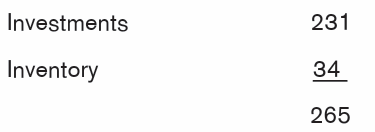
by ABC at 31.12.2017.
4. The property was acquired some years ago. The buildings element of the
cost was estimated at FRW 100,000 and the estimated useful life of the
assets was 50 years at the time of purchase. As at 31 December 2017
the property is to be revalued at FRW 800,000.
5. The plant which was sold had cost FRW 350,000 and had a carrying
amount of FRW 274,000 as at 1 January 2017. FRW 36,000 depreciations
are to be charged on plant and machinery for 2017.
6. The loan stock has been in issue for some years. The FRW 0.5 ordinary
shares all rank for dividends at the end of the year.
7. The management wish to provide for:
1. Loan stock interest due
2. A transfer to general reserve of FRW 16,000
3. Audit fees of FRW4,000
8. Inventory as at 31 December 2017 was valued at FRW 220,000 (cost).9. Taxation is to be ignored.
Required:
Prepare the financial statements of ABC Co as at 31 December 2017, including
the statement of financial position, the statement of profit or loss and other
comprehensive income, and the statement of changes in equity. No other notes
are required.
SOLUTION:
1. Normal adjustments are needed for accruals and prepayments (insurance,
light and heat, loan interest and audit fees). The loan interest accrued iscalculated as follows.

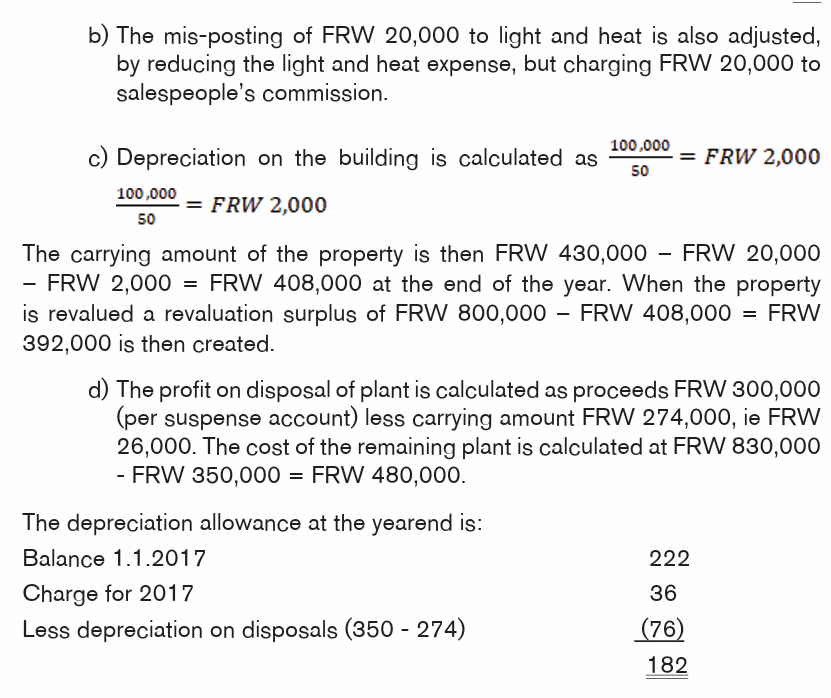


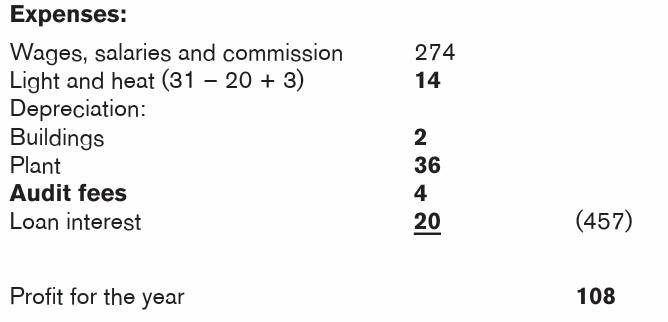
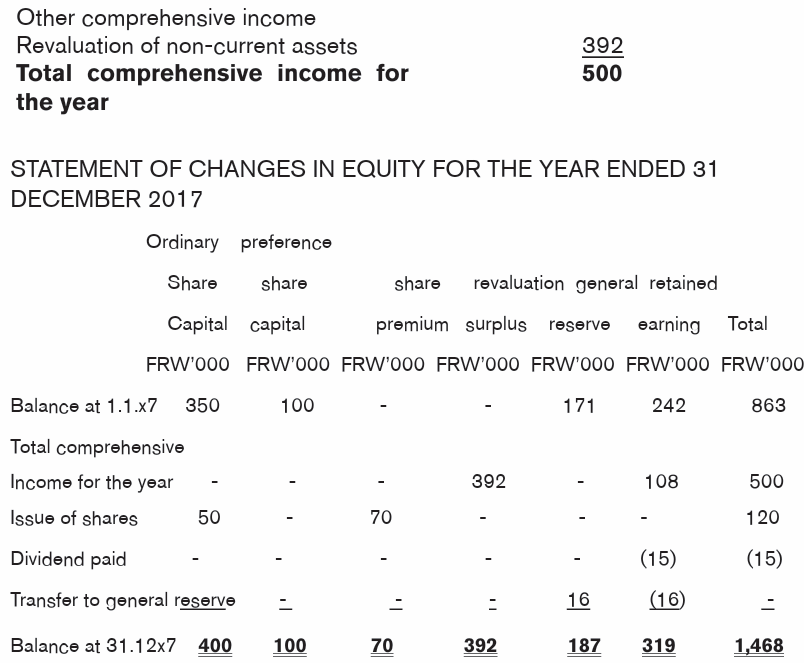

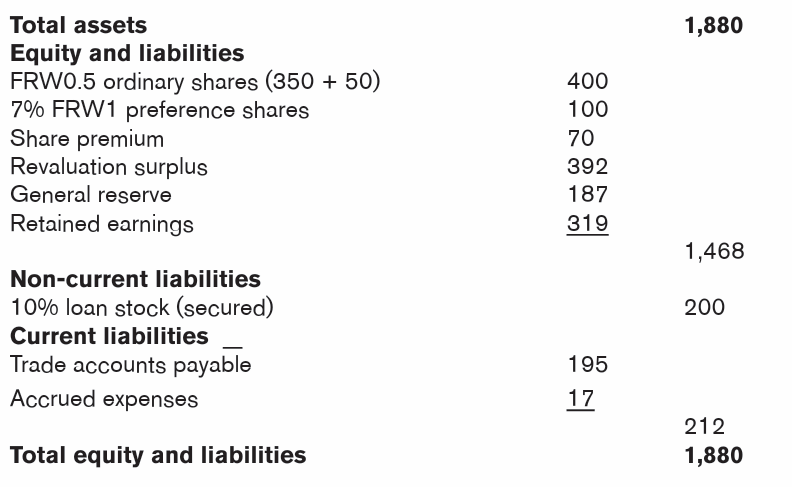
Illustration
1. Which of the following is not a component of financial statements?
a) Statement of Financial Position
b) Cashbook
c) Statement of Profit or Loss D Statement of Changes in Equity
2. The following trial balance was extracted from the books of accounts ofKWESA LTD for the year ended 20 June 2021:
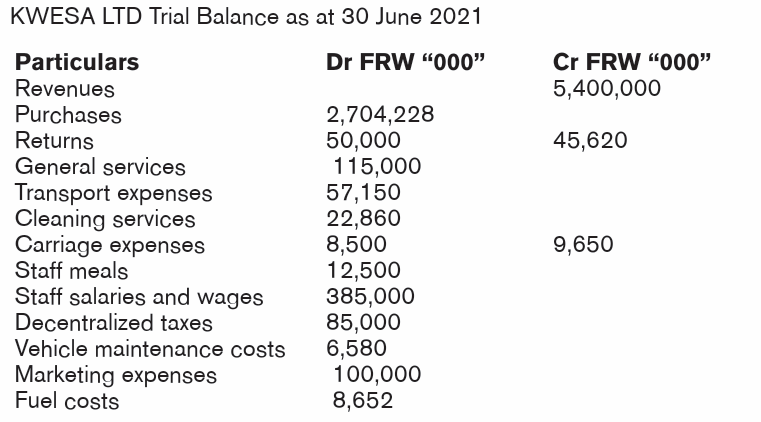

The following additional information is relevant for the preparation of financial
statements
1. The loan was obtained from Cogenenk Plc. ON 1stseptemeber 2020
at an annual rate of 16.5% and the interest was not yet settled as at
30thJune 2021.
2. Depreciation, Staff meals and staff salaries and wages are to be allocated
to both selling and Distribution and administrative expenses in the ration
of 30% to 70% respectively.
3. The following rate will be applicable in the depreciation of the followingassets:
– Buildings 5% straight line
– Furniture and fittings 25% reducing balance– Vehicles 20% reducing balance
4. The buildings were revalued at 30 June 2021 at FRW 3.2 billion
5. Income tax expense is to be charged at 30% of the profit
6. On 1st January 2021, the company acquired a new ERP software worth
FRW 543.5 million with a definitive useful life of 10 years. This software
has not been recorded in the financial statements.
Required: In accordance with IAS, Prepare:
a) Statement of profit or loss and comprehensive incomes of KWESA
LTD for the year ended 30 June 2021b) Statement of financial position of KWESA LTD as at 30 June 2021
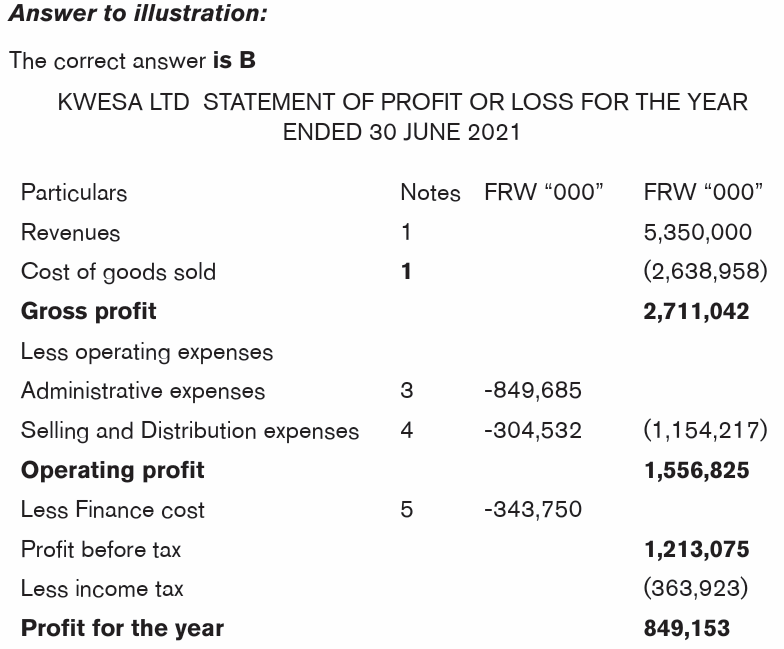
KWESA LTD STATEMENT OF FINANCIAL POSITION AS AT 30 JUNE 2021

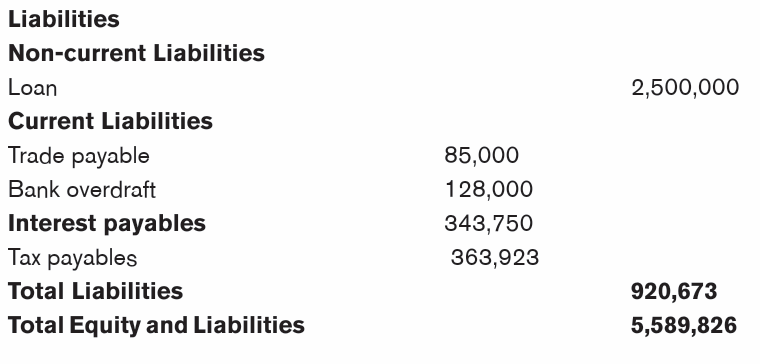

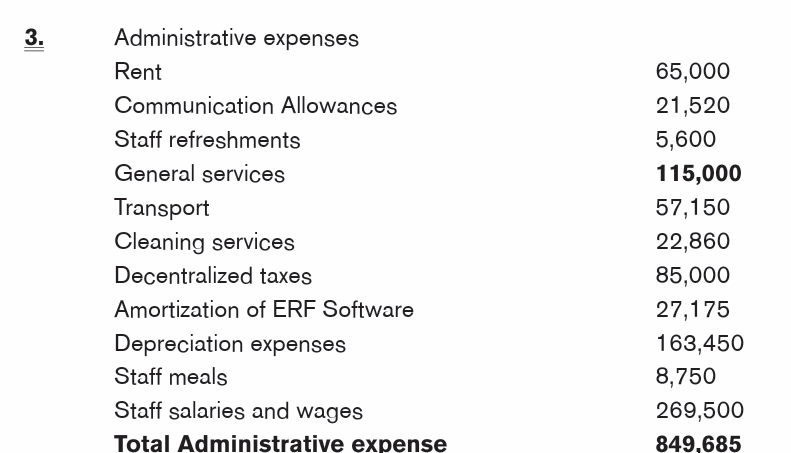
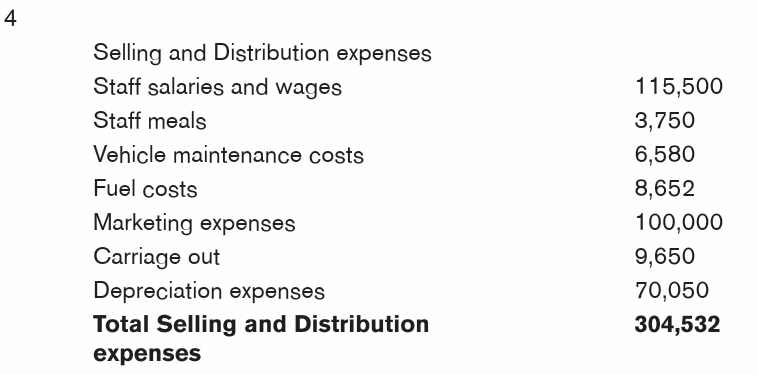
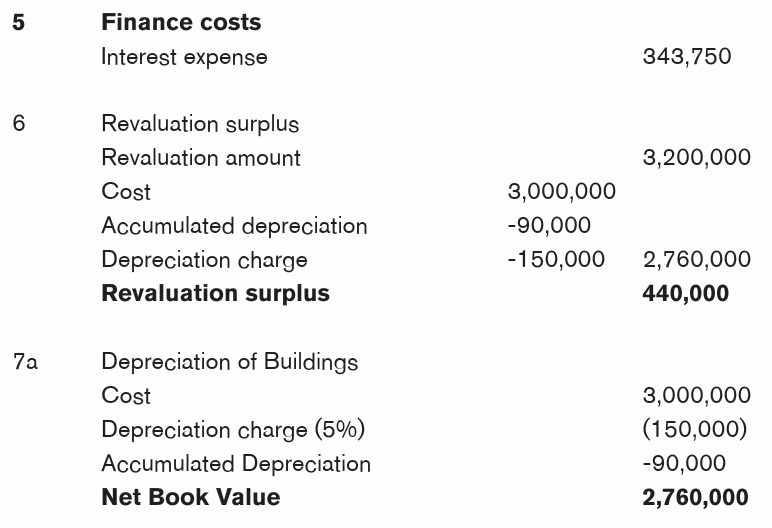
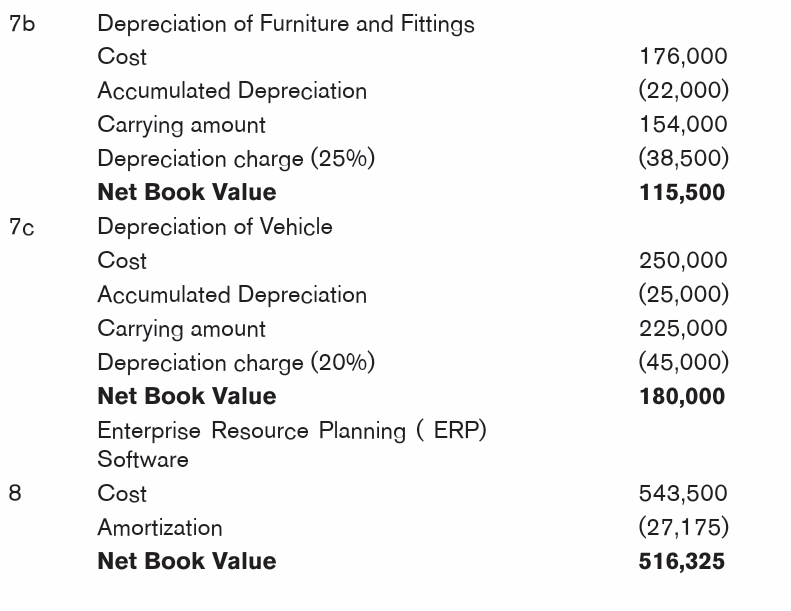
Application activity 6.4
The following is a summarized balance sheet of MURENZI Ltd as at 31st
March 2014, together with the comparative figures relating to the previous year.
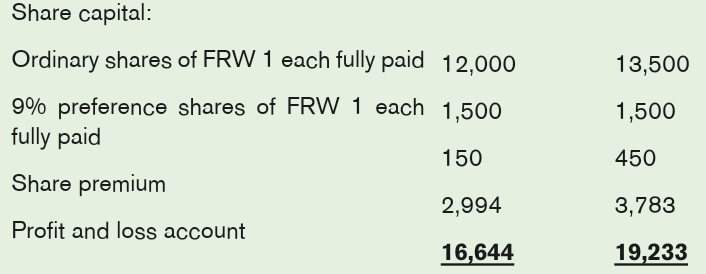

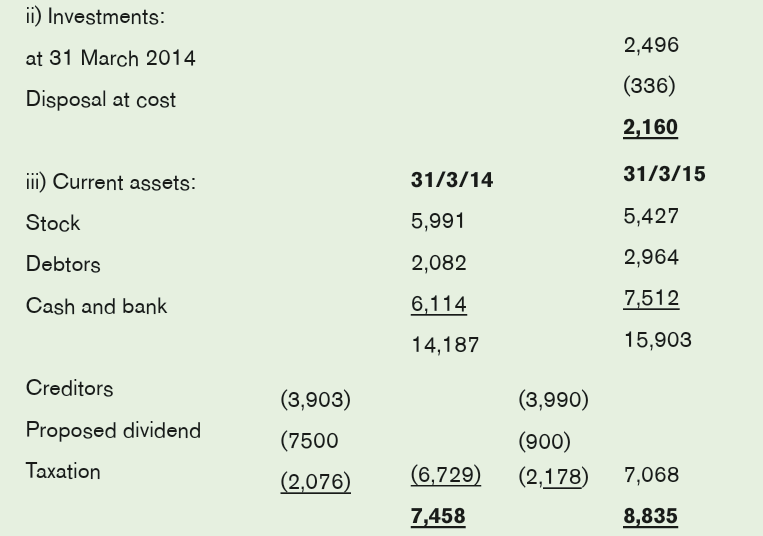
iv) Capital raising operations
a) During the year ended 31 March 2015 there was a right issue of
FRW 1 ordinary shares for every 8 held, being issued at a price
of FRW 1.20 per fully paid share.
b) There was an issue of FRW 300,000 10% debenture stock. Bothof these issues were fully subscribed.
NOTE: the trading profit was arrived at after charging the FRW 201,000
debenture interest.
Required:
Prepare the statement OF Cash Flow for MURENZI Ltd for the year ended
31 March 2015
2. What must include in note to financial statement for property, plantand equipment: IAS 16
Skills Lab
Students in small groups prepare financial statements of a limited liability
company from case studies.
Through a case study, students conduct a field visit to see how financial
statements are prepared in a selected limited liability company and presentwhat they have observed.
End assessment
1. According to IAS 1, which of the following items must appear on
the face of the statement of profit or loss and other comprehensive
income?
i) Tax expense
ii) Revenue
iii) Cost of sales
iv) Profit or loss
a) (iv) only
b) (ii) and (iv)
c) (i), (ii) and (iv)
d) (ii) and (iii)
2. According to IAS 1, which of the following items make up a complete
set of financial statements?
i) Statement of changes in equity
ii) Statement of cash flows
iii) Notes to the accounts
iv) Statement of financial position
v) Statement of profit or loss and other comprehensive income
vi) Chairman’s report
a) All of the items
b) (i), (ii), (iv) and (v)
c) (i), (ii), (iii), (iv) and (v)
d) (iii), (iv) and (v)
3. Which of the following items are non-current assets?
i) Land
ii) Machinery
iii) Bank loan
iv) Inventory
a) only
b) (i)and (ii)
c) (i), (ii) and (iii)
d) (ii), (iii) and (iv)
4. How is a bank overdraft classified in the statement of financial position?
a) Non-current asset
b) Current asset
c) Current liability
d) Non-current liability
5. The following account balances were extracted from the books of XYZ
LTD, a company owning a computer store in Nyarugenge, at the endof her financial year 30 June 2020:
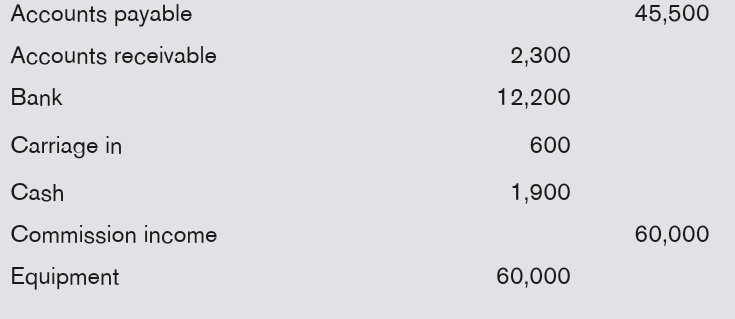
The inventory at the end of the year was valued at FRW 8,800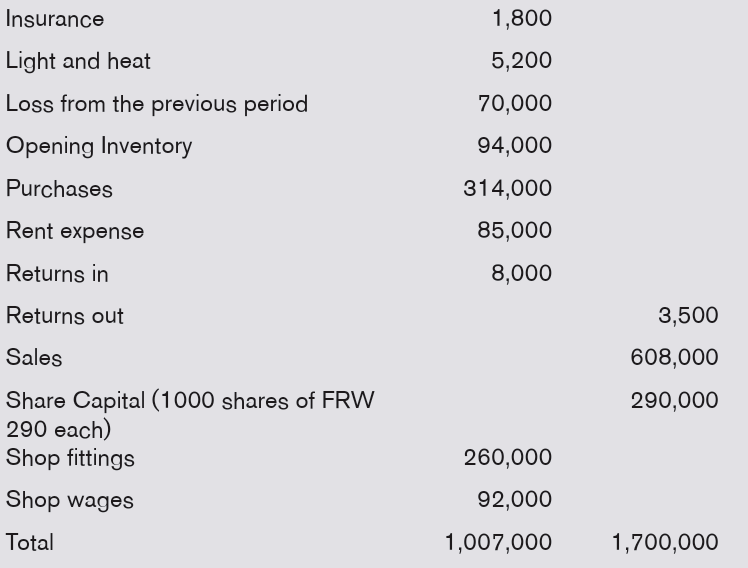
You are required to prepare (For Internal Purpose):
a) XYZ’s Statement of Profit or Loss for the year ended 30 June
2020 (10 Marks)b) XYZ’s Statement of Financial Position as at 30 June 2020
